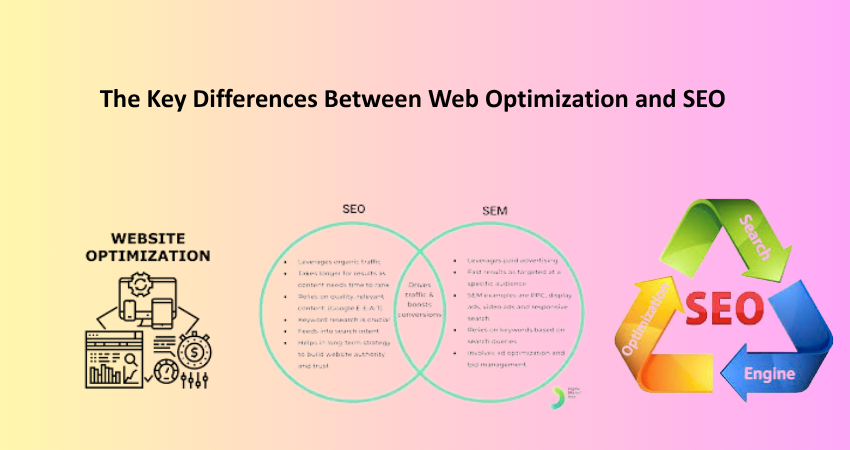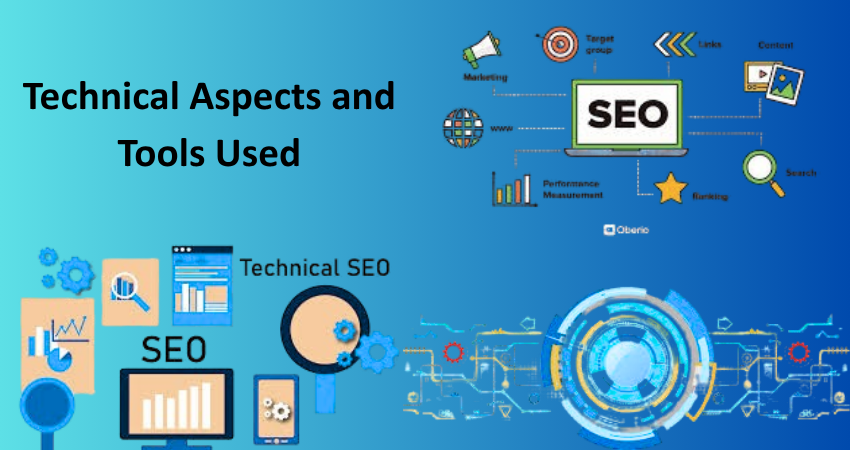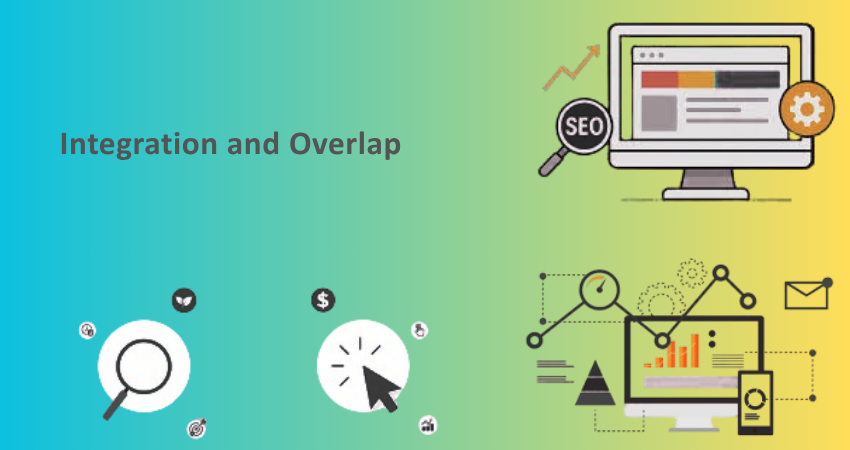
Introduction: Why Understanding the Difference Matters
In an ever-taxing digital ecosystem, being present on the Internet is no longer a matter of choice; it has become obligatory. But even mere presence on the web does not suffice. Websites must be reachable, fast, and functional. Here, web optimization and the SEO (Search Engine Optimization) system are called to the rescue. The terms are interchangeably but are entirely different strategies that can work hand in hand if understood properly for best performance and visibility of your website.
Understanding web optimization and SEO is equally important for marketers, developers, and business owners. Both seek to improve the website, but they do so from contrary sides. SEO is for driving organic traffic from search engines like Google, Bing, or Yahoo; web optimization, on the other hand, looks at user experience, speed, design efficiency, and performance once they land on the site. Confounding optimization with SEO or vice versa may cost one missed opportunities and misaligned strategies. In their essence, this article will distinguish between these two concepts and explain how they can operate together for creating a powerful online presence.
Purpose and Primary Focus
SEO: Optimizing for Search Engines
SEO refers to the methods and techniques to optimize the website in order to rank high in the search engine results pages (SERPs). The fundamental purpose of any SEO work is to achieve an increase in organic (non-paid) traffic by improving visibility for relevant inquiries. SEO therefore brings in a number of considerations such as content relevance, keywording, site structure, and backlinks. With relation to this, it is going to be more about pleasing the search engines so that it gets noticed, indexed, and recommended rather than first pleasing the user.
Search engine optimization, or SEO, is the science of getting your site higher on the search engine results page (SERP). It is that simple. The whole point is to increase organic (paid-free) traffic by making better visibility for relevant users who might be wondering what is out there for them. Mostly, it involves several tactics including content relevance, keywording, site structure, and backlinks. Doing this satisfies the search engine first and ensures reasonable usability for the human users outside.
Web Optimization: Enhancing User Experience and Performance
SEO may bring users to the site but optimization ensures fast, smooth, and effective experiences while visiting the site. An optimization goes technical as to performance page-load speed, responsiveness, UX/UI designs, accessibility, and conversion efficiency. Thus, providing optimal customer journeys across devices and types of browsers, thereby holding users longer and engaging in more desired actions, such as signing up or purchasing and sharing.
This includes image compression, minifying code, lazy loading, reducing HTTP requests, and optimizing server response time. Tools such as Google PageSpeed Insights, GTmetrix, and Lighthouse are used to find out what can be improved. A properly optimized website is not only fast but also highly intuitive, accessible, and usable. Optimizing the web will consider how a user interacts with your site, how simple it is to navigate, complete tasks, and find information. It concerns human behavior, not that of a search engine. SEO can walk you to the door; optimization will get you through it and keep you inside.
Technical Aspects and Tools Used

Tools and Techniques for SEO
SEO is an analytical and strategic blend of tools to analyze traffic, keywords, and site health. The most well-known SEO tools include Ahrefs, SEMrush, Moz, Google Search Console, and Yoast SEO (specifically for WordPress users). These tools identify how ranking your pages are, what keywords you’re ranking for, who is linking to your content, and how to fix your on-page and off-page SEO.
Robots.txt, XML sitemaps, canonical tagging, schema mark-up, 301 redirect, and HTTPS: these are all elements of technical SEO that applicate it. Your site should be mobile-happy, fast-loading, and easily accessible and understandable from the standpoint of search engines. Keyword research tools enable you to analyse the most popular search terms with minimal competition to boost your visibility: you can then look for backlink tracking tools that also help you monitor and generate a robust off-site SEO brand. Keeping up on changing algorithms and new best practices put forth by search engines like Google is another major aspect of SEO.
Tools and Techniques for Web Optimization
Performance and usability dominate the optimization of web pages. The tools like Google Lighthouse, WebPageTest, Pingdom are an essential part of web performance optimization for understanding the current speed of page load, bottlenecks, etc. Then developers use Chrome DevTools to inspect rendering performance and diagnose issues such as long task durations or layout shifts. Further, optimization methods may include source delivery networks (CDNs), browser caching, gzip, or even server-side rendering.
So you can optimize areas concerning design and usability with tools like Hotjar, Crazy Egg, and Google Analytics when analyzing where users click, where they drop off, and even what slows them down. An accessibility testing tool such as WAVE and axe DevTools will ensure your website is usable for everyone, including users with a disability. These are all tools for aiding web development and UX design into developing websites that are not only fast-paced within the technology arena but also effective and user-based. Bottom line is web optimization is what lays the foundation for pleasant experience, productivity, and conversion for users.
Content Strategy Differences
SEO Content: Keyword-Driven and Structured
Content is King when it comes to SEO- however, this is not just any content; but SEO content. SEO content is keyword-driven and is aimed to rank for specific queries in search engines. It includes blog posts, landing pages, product descriptions among others, all these optimized with the knowledge of relevant keywords, good heading hierarchy, internal linking, and compelling meta tags. Content should satisfy the search intent, whether it is informative content or transactional, or navigational. It should also be formatted in such a way as to enhance ease for search engine crawling and indexing.
SEO content, together with keyword usage, should be original, of high quality, and authoritative. Attention is given to helpful content, content that answers the user’s query or question in reality. Adding structured data, such as FAQ schema or review stars, can improve how your listing is displayed in search results. Content for SEO is also strengthened by a holistic link-building strategy, where it attracts backlinks from other reputable websites, enhancing the authority and visibility of the piece of content. In the end, however, the reason for the SEO content is not only to inform or engage but to bring traffic and convert through organic search visibility.
Web-Optimized Content: Readability and Engagement
On the contrary, web-optimized content is readability focused as well as having engagement and visual hierarchy. It concerns the size of the font, spacing, contrast, readability scores, and mobile-friendliness. Written and styled first to users and secondly to how one would consume online content, this is generally scanning rather than reading every word. Short paragraphs, subheadings, bullets, and many other visuals like images, videos, and infographics may be involved to break the text and maintain attention.
Web-optimized content ensures that one’s experience in accessing web content using mobile devices is as good as when accessed through desktops. Alt texts for images and plainness turned to jargon help all users benefit from the information it contains. Such content might not pursue specific keywords; it’s more on how smoothly a person could flow through the site engaging to click on things or fill a form. Thus, this type of content does complement the SEO-driven content in ensuring that once users come, they get to remain, read, and engage.
Metrics for Success
Measuring SEO Success
SEO generally is measured by improved search set accuracies, organic traffic, CTR, bounce rate off of organic searches, and conversion from organic search. Google Analytics and Google Search Console inform you about how users are finding your website, what keywords they are using, what pages they are visiting, and so on. Generally, a higher rank for relevant keywords gets more traffic, so it is important to make sure that translates into lead generation or sales.
The next critical metric is the backlink profile: how many other reputable sites link to your content. This is often considered a good signal of authority and trustworthiness from search engines’ point of view. Time spent on the page, pages per session, and exit rates provide insights into how well content engages users. While it may take time for the fruits of an SEO campaign to appear, they frequently last for many years; if properly executed, they will continue to grow in value while generating returns far into the future, completely outshining anything that paid campaigns can achieve.
Measuring Web Optimization Success
The measure of web optimization success encompasses page load speed, bounce rates, conversion rates, and user engagement indices such as duration of sessions and click paths. A well-optimized site should usually load within 3 seconds on all devices, should not have excessive layout shifts during loading, and should have intuitive navigation. Performance measurements are tested using Lighthouse, GTMetrix, and Core Web Vitals for load time, interactivity, and visual stability.
The better the metrics, the lower the bounce rates and the better the engagement. For example, faster sites with clear calls to action and optimized navigation structures keep users on the site longer, directing them to purchase or sign-up for a service. A/B testing and heat maps additionally provide opportunities for developers to fine-tune the website over time through actual user behavior. Lastly, web optimization has succeeded to reflect higher retention, greater user satisfaction, and more conversions while traffic remains the same.
Integration and Overlap

How SEO and Web Optimization Work Together
Although SEO and web optimization rank on different planes, they bear a solid interconnection. You cannot fully one without thinking about the other. Page speed and mobile usability are the examples of web optimization that Google also considers in ranking algorithms. All these could mean highly ranking content; but slow loading and horrible user experiences translate to higher bounce rates that ultimately affect rankings at some point. This very overlap should thus make working on performance and usability a part of your SEO strategy, while your optimization efforts should also remember SEO best practices.
SEO and web optimization are the two wings of an identical bird that together constitute a holistic approach toward driving more traffic and better engagement. An improved web layout renders SEO content more readable. SEO channels the user’s flow; web optimization ensures they convert and repeat. Thus, in many prospering websites, the most profound results arise from teams that know how to merge both disciplines—marketers, designers, and developers working together for a seamless and effective UI experience.
Avoiding Conflicts Between the Two
The presence of conflicts between search engine optimization (SEO) and web optimization can arise if they are not in accord, even though together they make an incredible combination. For example, the SEO stance is one with lengthy keyword headings and lengthy content, while the web optimization view is minimalist and to-the-point content. Thus, if pop-up ads or truly awful websites that are crammed with keywords are served up for the sake of SEO, this detracts from the user experience, resulting in irritation and perhaps lost conversions. On the other hand, mercilessly speeding a site could be detrimental to SEO with regard to stripping away the context and keywords from the site.
With such a precedent, balance remains the name of the game. Use information obtained from SEO to optimize the content strategy but use best design methods and performance-related techniques to serve up that content. Content should be such that visitors can search, read, and use it. Regular audits should be done for the site to be sure of the SEO performance of its content and user experience; any compromise or improvement should be looked for in that regard. If issue resolution, then, is duly addressed on SEO as well as web optimization, the website shall serve the best interests of organic search engines and mere human visitors.
Conclusion: Choose Synergy, Not Sides
Web optimization and SEO are the two arms that work together in favor of a digital strategy. Their singular roles matter when it gets down to an effective digital strategy. SEO draws users through the door by gaining visibility and rank, while web optimization makes sure those users enjoy a fast, smooth, and seamless experience once they enter. Only success, on a highly competitive digital avenue, integrates both strategies to build a user-first, search-optimized website.
Learning the fundamentals that differentiate SEO and web optimization will help you prioritize your resource allocation effectively to focus on creating a site that is highly ranked and equally functional. Whether you are a developer, marketer, or business owner, blending both disciplines will ensure that your website isn’t just online but also optimized, indexed, and ready to convert.